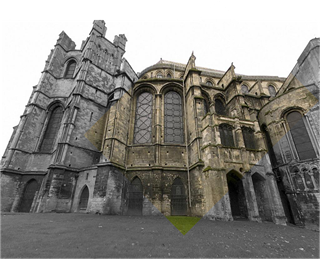
Few architectural tracts remain from the medieval period in the west. Two tracts on architecture that this paper utilizes from this period—one by Gervase in 1185, and one by Edmer in 1116—both discuss subjects that collectively include the fire, building, and arrangement of different architectural campaigns at Canterbury Cathedral. Here, these texts are used to trace the written knowledge of the succession of churches—those of Lanfranc, Anselm, William of Sens, and William the Englishman, the last of whose termination of the cathedral remains intact today. Viewing these buildings as a united set of statements, this paper proposes that they interlink in purpose and in conception. While scholars like Richard Krautheimer and Günter Bandmann have suggested there is a possible link between architectural form and conceptual or philosophical meaning, there has been much doubt about this connection by scholars like Paul Crossley. In the course of this paper, the idea of an iconography of architecture and even an iconography of architectural tools are explored in a direct challenge to Crossley’s work by using Gervase and Edmer to establish a line of intention in planning and meaning. While Crossley states that “Even if style can . . . be derived from thought, the character of the gothic cathedral, the sources of its totality, cannot be traced back to some single ‘intention.’” This paper maintains that the complete set of buildings from at least that of Anselm (1090 – 1130) that come-and-go on the site of Canterbury Cathedral form a Gestalt, or a planned intentional set of parts that create a whole originary vision. This vision reproduces a set of parallel architectural types comparable to the styles of the visual figurative arts like idealism, naturalism, stylization, abstraction, and non-representation and paralleled in the text of Isidore of Seville’s Etymologies. In this presentation, the explication of idealism in architecture is the primary objective and its theological relationship to what this study relates to Christian representation and Jewish representation.

